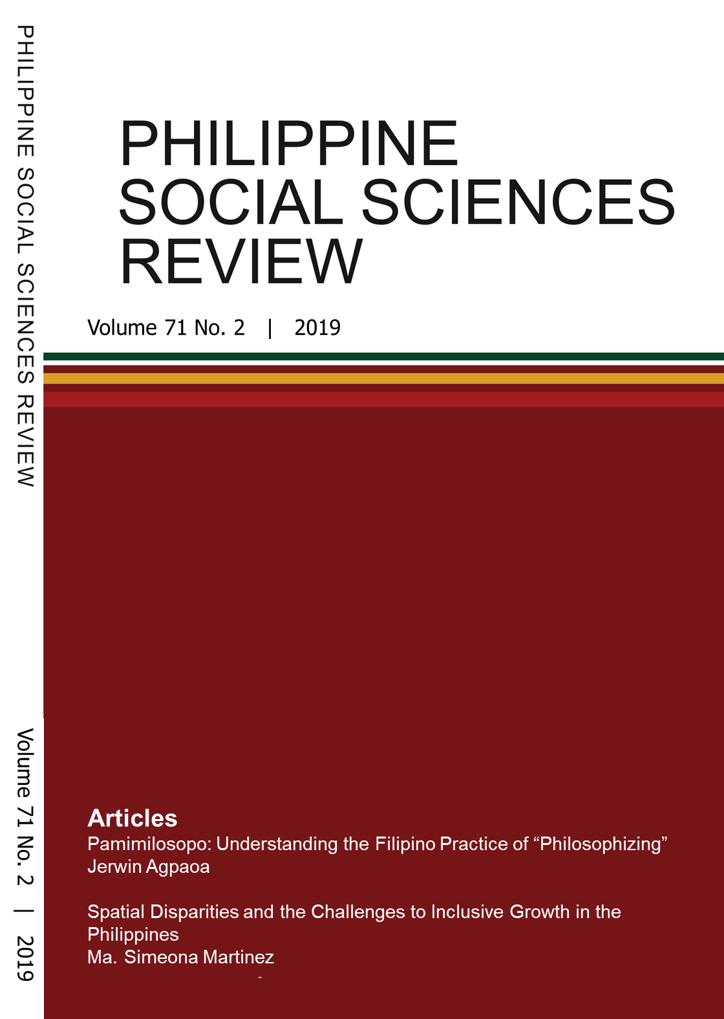Spatial Disparities and the Challenges to Inclusive Growth in the Philippines
Abstract
This paper charts the interconnections of economic growth and spatial disparities in the Philippines in examining the spatial strategy for inclusive growth inscribed in the national development plan for the country. It synthesizes the findings and observations from key studies on spatial disparities in economic development by integrating theoretical arguments, empirical expositions, and practical insights on the patterns of “leading and lagging” areas that characterize uneven development in the Philippines. The results of spatial proximity and descriptive statistical analyses indicate the striking disparities in density and opportunities for gainful work between established urban centers and their immediate surrounds. These, in conjunction with disparities in human capital, sluggish domestic infrastructural development, weak linkage between industrial and agricultural sectors, and lapses in redistributive mechanisms, pose a challenge to economic integration and inclusive growth espoused by the National Spatial Strategy (NSS) in the Philippine Development Plan for 2017 2022.
Published
2021-11-15
How to Cite
MARTINEZ, Ma. Simeona M..
Spatial Disparities and the Challenges to Inclusive Growth in the Philippines.
Philippine Social Sciences Review, [S.l.], nov. 2021.
ISSN 2672-3158.
Available at: <https://journals.upd.edu.ph/index.php/pssr/article/view/8410>. Date accessed: 03 sep. 2025.
Section
Articles


